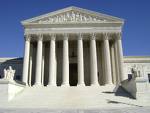 Despite the national headlines over the past decade or more regarding tobacco litigation, the state of Connecticut had never before seen a successful product liability action against a tobacco company. That is, until Barbara Izzarelli recently prevailed in her case against tobacco giant R.J. Reynolds. Law.com recently reported that a federal jury awarded Ms. Izzarelli $8 million as compensation for larynx cancer that she developed at age 36 and which she contended was caused by smoking R.J. Reynolds cigarettes for more than twenty years.
Despite the national headlines over the past decade or more regarding tobacco litigation, the state of Connecticut had never before seen a successful product liability action against a tobacco company. That is, until Barbara Izzarelli recently prevailed in her case against tobacco giant R.J. Reynolds. Law.com recently reported that a federal jury awarded Ms. Izzarelli $8 million as compensation for larynx cancer that she developed at age 36 and which she contended was caused by smoking R.J. Reynolds cigarettes for more than twenty years.
The case focused on R.J. Reynolds’ marketing strategy, primarily the company’s alleged efforts to specifically target the teen market back in the 1970’s when Ms. Izzarelli was a teenager and first began to smoke. Her attorneys, led by David Golub of the law firm of Silver, Golub & Teitell, alleged that R.J. Reynolds conducted marketing research on the smoking habits of youths as young as twelve and implemented various business practices directed at luring young people to cigarettes.
[Golub] contended that in the 1970s, after young smokers were attracted to flip-top boxes in which Philip Morris’ Marlboro cigarettes were sold, R.J. Reynolds developed new products to appeal to 14- to 20-year-olds. Golub further argued that those cigarettes were sold in popular teen hang-outs and at reduced prices.
While the jury found in Ms. Izzarelli’s favor, it did not absolve her completely of her own conduct in choosing to smoke for more than twenty years. The original verdict had been $13.6 million, but the jury found that Ms. Izzarelli was 42% at fault so the verdict was reduced to $8 million (Connecticut recognizes the doctrine of comparative negligence, meaning that a jury award can be reduced depending on whether, and to what extent, the plaintiff was negligent.). Still to be decided is the issue of whether R.J. Reynolds should be subjected to punitive damages, i.e., a monetary award intended to punish the company and deter others from engaging in similar conduct. Should punitive damages be assessed, the total award could potentially be as high as $24 million.
For Ms. Izzarelli, who will soon turn 50, this verdict was a long time coming. She was originally diagnosed with larynx cancer in 1996. She filed suit eleven years ago in 1999. According to her attorneys, she is currently “very disabled” and is unable to breathe through her nose or mouth. She instead uses a tube inserted in her throat. Because of her injuries, her diet is restricted to soft foods. Despite these limitations, Mr. Golub calls her “a remarkable woman to overcome these health problems and lead a normal life as much as she can.”
Despite the decade-long efforts to seek redress for her injuries, the verdict and the jury award are still not final. According to David Howard, a spokesperson for R.J. Reynolds, the company has promised to appeal the verdict.
“We’re disappointed in the decision in this matter,” said Howard. “We have several grounds for appeal and we are confident in our defenses going forward.”
Early comments by the defense indicate that R.J. Reynolds will challenge the trial court allegedly denying it the right to put on a ‘full medical defense’ in which Reynold intended to show that it was improbable that the plaintiff’s injuries were related to her smoking. The second issue mentioned post-verdict was the perceived error by the trial judge allowing “all youth marketing evidence despite the fact that, before trial, one of the plaintiff’s claims was dismissed because there was no evidence that the plaintiff was affected by any quote, unquote youth marketing.”
We will keep you posted on any developments in this case.









